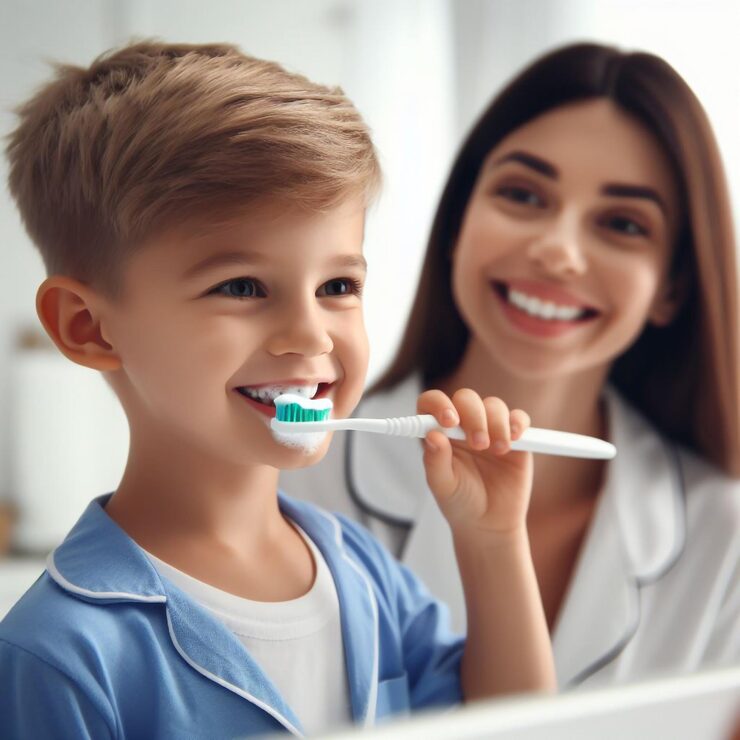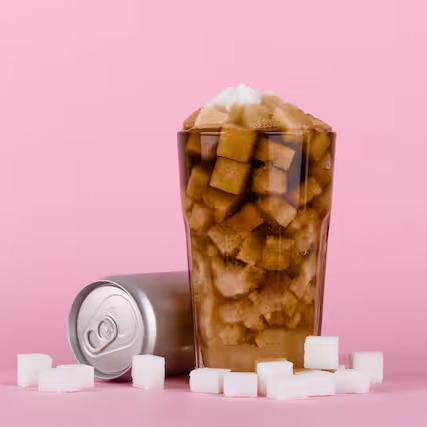Teenagers who need their teeth straightened are choosing clear plastic aligners such as Invisalign® in increasing numbers. Aligners are far less noticeable than metal braces and are much easier for most teens to adjust to. But while they have many advantages, caring for them can be a little tricky, especially when it comes to oral hygiene.
At Blue Whale Dental, we see many teenage patients who want straighter teeth without braces. To help them get the best results, we always emphasize cavity prevention while using aligners. Here are five smart tips every teen and parent should know.
According to the Invisalign® official site, clear aligners are designed to be removable, allowing for easier cleaning of both teeth and aligners. However, if not cleaned properly, aligners can trap food particles and bacteria, potentially increasing the risk of cavities. It’s essential to maintain a consistent oral hygiene routine to mitigate this risk.
Establish a good routine
Good oral hygiene is the foundation of cavity prevention. Teens must brush and floss at least twice a day and always remove their aligners before doing so. Aligners should also be cleaned daily by gently brushing them with a soft toothbrush and non-abrasive toothpaste. A rinse with lukewarm water or a quick soak in clear mouthwash helps keep them fresh and bacteria-free.
Follow the schedule
Every aligner comes with a change schedule, usually every 1 to 2 weeks. Each new set gradually moves the teeth into their desired position. Staying on schedule is essential not only for straightening teeth but also for preventing oral health problems. It is a good idea to keep the previous set of aligners as a backup in case one is lost.
Avoid eating with aligners
Your teen should never eat or drink anything besides water while wearing aligners. Food particles and sugary drinks can get trapped, leading to discoloration, bad breath, and an increased risk of cavities. Encourage them to always carry their aligner case to avoid misplacing trays during meals.
Stay consistent
Aligners need to be worn for at least 22 hours a day. Taking them out too often delays progress and can increase the risk of cavities since the teeth and gums are not protected properly. Encourage your teen to wear them consistently, only removing them for meals, cleaning, or special occasions.
Understand the difference: with vs. without aligners
One of the most important parts of cavity prevention is knowing how aligners change daily oral care. Here is a simple comparison to help parents and teens understand:
| Aspect | With Aligners | Without Aligners |
|---|---|---|
| Cleaning Routine | Extra step: cleaning aligners along with teeth | Standard brushing and flossing |
| Sugar Exposure | Sugars can get trapped if aligners are worn after eating | Less chance of sugars being trapped |
| Discipline Needed | Must remove before meals and brush before reinserting | Standard daily hygiene |
| Cavity Prevention | Strong if guidelines are followed | Relies only on daily hygiene |
This shows why a little extra discipline goes a long way toward protecting your teen’s smile while they use clear aligners.
For More Details Visit: American Dental Association
FAQs
Can aligners increase the risk of cavities in teens?
Yes, if aligners are worn after eating without brushing, sugars and bacteria can get trapped against the teeth. Following a good cleaning routine prevents this risk.
How often should teens clean their aligners to prevent cavities?
Aligners should be cleaned daily with a soft toothbrush, non-abrasive toothpaste, and rinsed with lukewarm water. Some patients also use special aligner cleaning solutions for extra freshness.
What foods should be avoided while wearing aligners?
Teens should avoid eating or drinking anything besides water with aligners in place. Sticky, sugary, and acidic foods should be brushed away before reinserting the trays.
Do aligners need to be worn all day?
Yes. For best results and cavity prevention, aligners should be worn at least 22 hours per day, removed only for meals and cleaning.
Is it easier to get cavities with aligners compared to braces?
Both can lead to cavities if proper care is not taken, but aligners allow for easier brushing and flossing since they can be removed, giving them an advantage for cavity prevention.
Choosing the Right Dentist in NYC
Ultimately, the success of your aligner treatment and cavity prevention depends not just on your teen’s discipline but also on the skill of your dentist. Look for an experienced dentist in New York City who specializes in clear aligners and preventive care for teens. A knowledgeable dentist will guide you through the process, ensure aligners fit properly, and provide tips to protect your teen’s oral health during treatment.
Final Thoughts
Clear aligners are a fantastic choice for teens who want straighter teeth without braces, but cavity prevention requires consistency and the right guidance. With proper care, aligners can transform your teen’s smile without unwanted dental issues.
At Blue Whale Dental, we combine aligner expertise with preventive care to make sure every patient enjoys both a beautiful smile and long-term oral health. If you are considering aligners in NYC, schedule a consultation today and let us help you find the perfect balance of straight teeth and cavity-free confidence.



